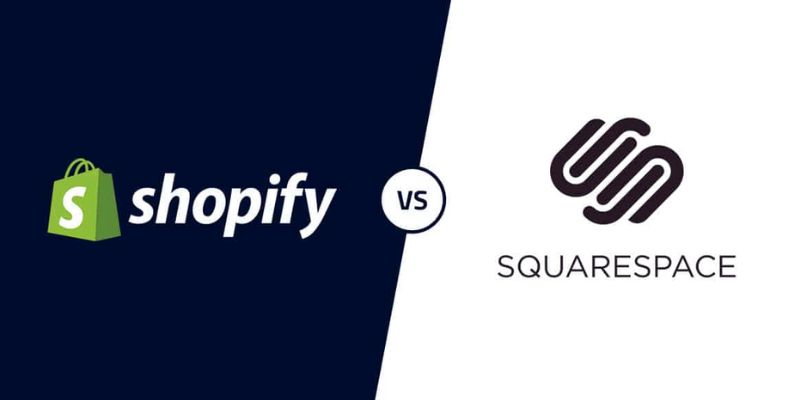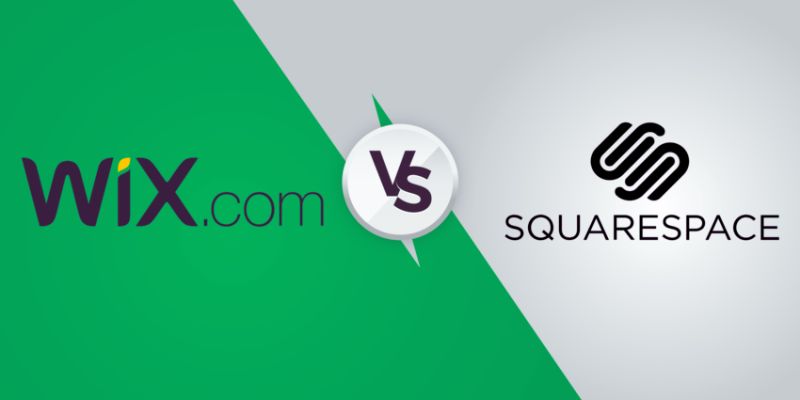Shopify vs. Squarespace: Which Is Best for E-Commerce Success
Building a good online store depends mostly on selecting the right platform. Two of the strongest candidates are Squarespace and Shopify. Though they meet various purposes, each provides strong tools for e-commerce. Business owners seek strong support, simplicity of use, and freedom. Knowing the advantages and drawbacks of both systems enables one to make a wise choice.
While Squarespace excels in design and simplicity, Shopify is more concerned with selling and scaling. Making the decision becomes easier when one compares sales tools, cost, customizing, and integrations. Entrepreneurs require a place appropriate for their objectives and product lines. Crucially, one must know how each performs in actual situations. Long-term success and development are the aim. Discover your perfect solutions by looking over the best e-commerce platform comparisons.

Comparing Platforms for Different E-Commerce Needs
Knowing the differences in important aspects between Shopify and Squarespace helps focus the appropriate decision. Every platform has strengths based on your store's size and style, from setup support. Let's dissect their characteristics to identify which ones help expand long-term e-commerce.
Ease of Use and Setup
Shopify presents a simplified onboarding process that is meant especially for online sales. Users get given help and follow easy procedures. Pre-built templates and drag-and-drop tools let store setup take minutes. The dashboard of Shopify is neat and oriented on sales. Ordering, inventory control, and discount management come naturally. Even novices can start fast without knowing the code. Visual editing is where Squarespace excels. Users value artistic control and gorgeous templates. Features with drag-and-drop are polished and smooth. It resembles using artistic tools to construct a website. Store navigation and product management, however, could seem less commercial. For people who appreciate simplicity and elegance, Squarespace fits. Users looking for sales-first tools find Shopify more suited. Though they target different user goals and processes, both systems are easy to use.
Design and Customization
Modern, stylish designs are well-known from Squarespace. Creatives and designers value appearance. Templates allow rich media and are mobile-responsive. Built-in style settings help one customize something easily, but most adjustments call for no code. Though it provides various themes as well, Shopify mostly emphasizes utility. Excellent layouts for product presentations come from premium themes. Liquid, the theme language for Shopify, lets developers change code. Though they may require assistance adjusting, users get more power. Squarespace themes tend toward blogs, portfolios, and service-based websites. Shopify themes are made to promote products and increase conversions, reflecting this purpose. Although both allow customization, their main priorities differ. Design-driven readers will find Squarespace appealing. Shopify fits companies needing strong e-commerce design. Choose the platform suitable for your brand and vision of products.
E-Commerce Features and Tools
Shopify provides a whole toolkit designed for online retailing. Built-in are product pages, inventory control, and abandoned cart recovery. Users can provide several variations, discount codes, and delivery policies. Thousands of gateways and Shopify Payments streamline checkout. Apps add capability via subscriptions, bundles, and upsells. Though it has fewer possibilities, Squarespace offers basic selling capabilities. Users can create simple discounts, control inventory, and add items. For small businesses with few products, it performs nicely. Digital downloads and appointment scheduling are also supported. The ecosystem of Shopify facilitates development and big catalogs. Advanced reports and multiple channel sales improve performance. Those with restricted product lines and basic needs will find Squarespace appropriate. For major online stores, Shopify versus Squarespace features help Shopify to win.
Pricing and Value
Basic, Shopify, and Advanced are three primary options available from Shopify. Starting at $39, monthly expenses scale with features. Every package calls for secure hosting, support, and basic e-commerce capabilities. Unless utilizing Shopify Payments, transaction costs apply. For basic e-commerce, Squarespace pricing starts at $23 a month. The commerce proposals call for consumer accounts and eliminate transaction fees. For small shops, Squarespace provides excellent value. Particularly for startups, Shopify offers more tools for the cost. Think about the elements that most count. Advanced reports, outside apps, and scalable infrastructure help to explain Shopify's increased price. For consumers on a tighter budget who sell less, Squarespace is best. Business size, expansion ambitions, and feature needs affect the appropriate online shop builder.

Integrations and Apps
Thousands of plugins abound in Shopify's App Store. Users can add features covering search engine optimization, shipping, loyalty programs, and more. Reaching more consumers depends on integrating with Amazon, eBay, and Instagram sites. Developers can create private or public apps. Squarespace offers, in comparison, few integrations. Though the ecology is smaller, some outside services are accessible. Users have to operate inside built-in tools or simple extensions. Shopify's adaptability helps with complicated processes and particular needs. Email tools, customer service, and automation tools are easily added. Squarespace gives consistency and simplicity top importance. Fewer apps equal less complexity but also less advanced functionality. If integrations are important, Shopify leads. Shopify fits any specialty, but Squarespace keeps things simple.
Customer Support and Resources
Shopify offers phone, email, and chat customer service that is available 24/7. Additional assistance comes from a community forum and a broad knowledge base. Free courses for learning best practices are available from Shopify Academy. Many times, users value fast replies and useful direction. Between business hours, Squarespace provides email and live chat. Their tutorials and guidelines are excellent, with an eye toward design. Support is less than what it is at Shopify. Technical questions usually call for Shopify's staff to be more experienced in e-commerce. Both systems provide dependable materials. However, Shopify's support system fits quickly growing online companies. Real-time help allows one to address problems and safeguard income promptly. For broad website questions, Squarespace assistance is excellent. For purposes particular to e-commerce, Shopify is unique.
Conclusion:
Although Shopify and Squarespace have excellent tools, they meet various corporate purposes. Growing stores requiring strong selling capabilities would find Shopify perfect. Small stores with a design concentration find Squarespace more suited. Think through corporate size, technical requirements, and long-term objectives. Shopify offers skilled help, apps, and scalability. Less expensive Squarespace provides simplicity and beauty. The demands of your brand will determine which online shop builder best fits you. Shopify is a wise investment for most e-commerce-oriented companies. Guide your choice and boldly expand your online company with this best e-commerce platform comparison.
Related Articles

Jira vs. ServiceNow: A Comprehensive Comparison to Help You Decide

Brevo vs. Mailchimp: Choosing the Right Email Marketing Tool

Shopify vs. Squarespace: Which Is Best for E-Commerce Success

Wix vs. Squarespace: A Comprehensive Comparison to Find the Best Website Builder

Zoho vs. Salesforce: A Detailed Comparison to Choose the Best CRM

Zendesk vs. Jira Service Management: Which is Best for Your Business

The 5 Best Habit Tracker Apps to Transform Your Life: A Guide

What is Google Sites And How to Use It Effectively: A Beginner's Guide

Top Online Graphic Design Tools for 2025: Canva, Figma, and More

The Best Project Management Tools for 2025: Trello, Asana, and More

Craft vs. Notion: A Detailed Comparison to Find the Best Option

 knacksnews
knacksnews